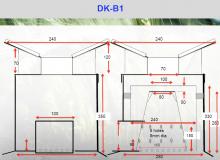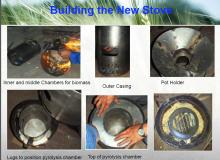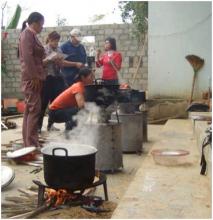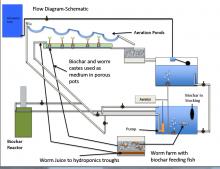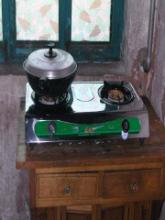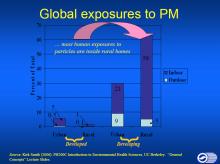ETHOS 2012, Seattle, Washington January, 2012
The annual lighting of the fires was well represented by various forms of TLUD and T-CHAR units. Christa Roth and Amanda are in the top picture with the prototype of the new Hot Cube. It's a flat pack design that can be assembled by local artisans. The top cube is a biomass burning t-char design, and the bottom cube is an improved charcoal cooker.
In the second photo, Paul Anderson is showing off a brand new T-CHAR protype. The T-CHAR is very much like a TLUD but it has an open bottom. Biomass can be burned to make char over a can or pot to reserve it later, or it can be used over a conventional charcoal stove.
Jet City Stoveworks brought their metal Jatropha Seed Gasifier. It was a windy, wet day, and the stove burned jatropha seeds pretty well. The metal between the gasifier top and the chimney is a warming area that was requested by the community that they are developing the stove for. It gets pretty warm. I may still have the burn on my finger from touching it when it was hot. (I work with hot stoves all the time, and it amazes me how often I forget that metal that's been near fire is frequently hot).
The blue 'tank' is a beautiful looking insulated charcoal stove that Burn Design Lab (Peter Scott and co) has been designing. Burn has is responding to consumer pressure and offering a more effecient, and beautifully designed charcoal stove. They are also planning to sell the latest versions of their biomass cooking stoves this year.
The final two pictures highlight Karsten and the metal TLUD stove that he is building in Uganda. It is well manufactured, sturdy, was my favorite for cooking marshmallows and it sells for just under US$20.

